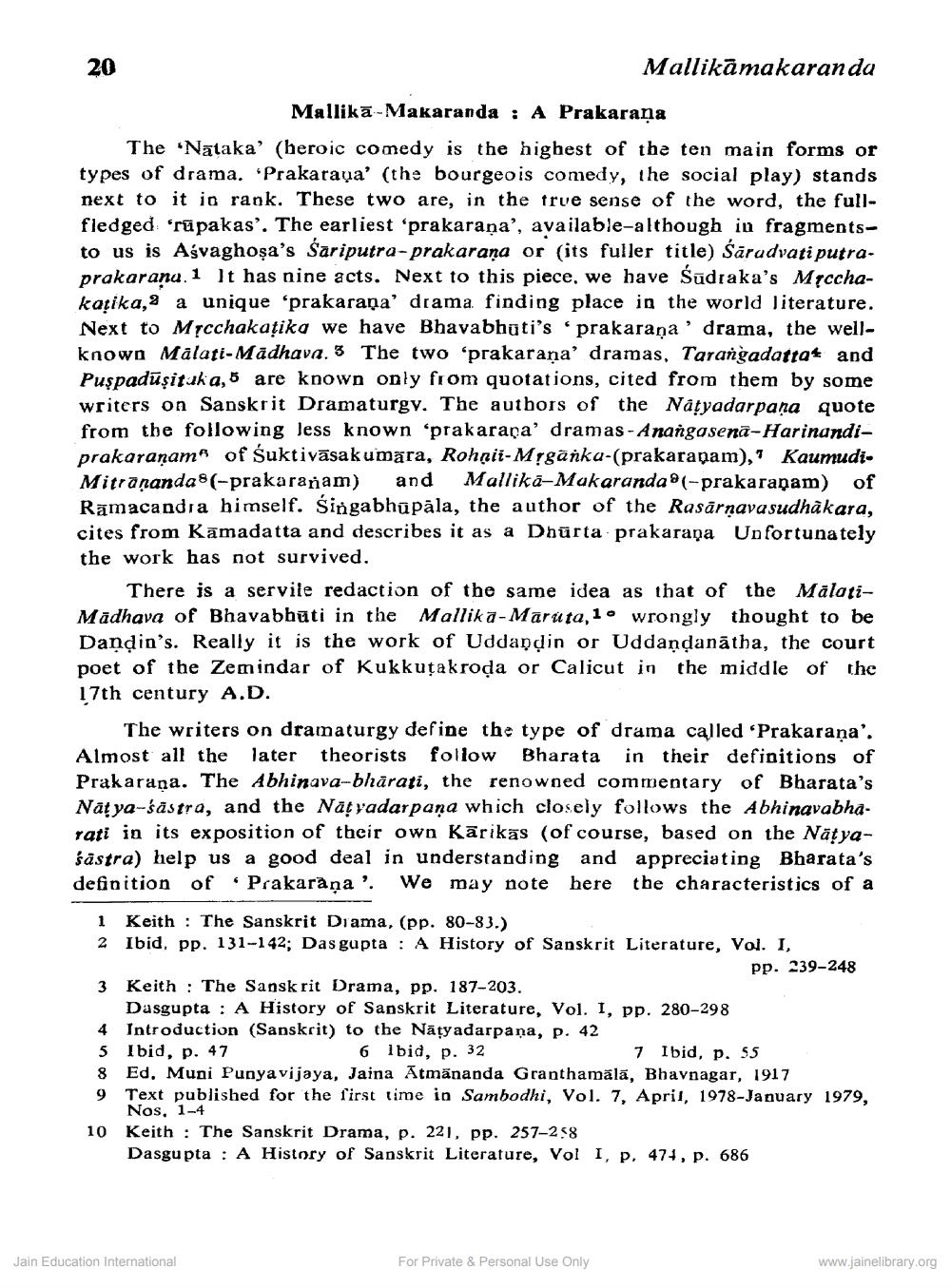________________
20
Mallika-Makaranda: A Prakaraṇa
The 'Nataka' (heroic comedy is the highest of the ten main forms or types of drama. 'Prakaraya' (the bourgeois comedy, the social play) stands next to it in rank. These two are, in the true sense of the word, the fullfledged rapakas'. The earliest 'prakarana', available-although in fragmentsto us is Asvaghosa's Sariputra-prakarana or (its fuller title) Saradvati putraprakarana 1 It has nine acts. Next to this piece, we have Śadraka's Mrcchakatika, a unique 'prakarapa' drama finding place in the world literature. Next to Mycchakatika we have Bhavabhuti's prakarana drama, the wellknown Malati-Madhava. The two 'prakarana' dramas, Tarangadatta and Puspadusituka, are known only from quotations, cited from them by some writers on Sanskrit Dramaturgy. The authors of the Natyadarpana quote from the following less known 'prakaraça' dramas-Anangasena-Harinandiprakaraṇam of Suktivasakumara, Rohait-Mrganka-(prakarapam), Kaumudi Mitrananda" (-prakaranam) and Mallika-Makaranda(-prakarapam) Ramacandra himself. Śingabhupala, the author of the Rasarṇavasudhakara, cites from Kamadatta and describes it as a Dhurta prakarapa Unfortunately the work has not survived.
Mallikāmakaranda
There is a servile redaction of the same idea as that of the MalatiMadhava of Bhavabhuti in the Mallika-Maruta,1 wrongly thought to be Dandin's. Really it is the work of Uddandin or Uddandanatha, the court poet of the Zemindar of Kukkutakroda or Calicut in the middle of the 17th century A.D.
The writers on dramaturgy define the type of drama called 'Prakarana". Almost all the later theorists follow Bharata in their definitions of Prakarana. The Abhinava-bharati, the renowned commentary of Bharata's Natya-sastra, and the Natvadarpaṇa which closely follows the Abhinavabharati in its exposition of their own Kärikas (of course, based on the Natyasästra) help us a good deal in understanding and appreciating Bharata's definition of Prakarana '. We may note here the characteristics of a
of
1 Keith The Sanskrit Drama, (pp. 80-83.)
2 Ibid, pp. 131-142; Dasgupta: A History of Sanskrit Literature, Vol. I,
pp. 239-248
3 Keith The Sanskrit Drama, pp. 187-203.
Dasgupta: A History of Sanskrit Literature, Vol. I, pp. 280-298
4 Introduction (Sanskrit) to the Natyadarpana, p. 42
5 Ibid, p. 47
6 lbid, p. 32
7 Ibid, p. 55
8 Ed. Muni Punyavijaya, Jaina Atmananda Granthamālā, Bhavnagar, 1917
9 Text published for the first time in Sambodhi, Vol. 7, April, 1978-January 1979, Nos. 1-4
10 Keith The Sanskrit Drama, p. 221, pp. 257-258
Dasgupta: A History of Sanskrit Literature, Vol I, p. 474, p. 686
Jain Education International
For Private & Personal Use Only
www.jainelibrary.org




